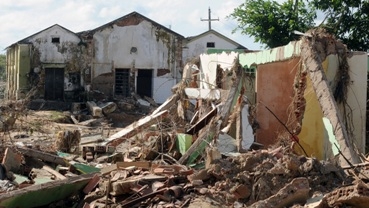Santa Catarina, 2008: floods and landslides kill about 110 people and damage the Bolivia-Brazil gas pipeline. Alagoas and Pernambuco, 2010: the worst rainy season in the last 20 years affects approximately 1 million people in two of Brazil’s poorest states. Rio de Janeiro, 2011: a series of flash floods and landslides claim the lives of 1,000 people in seven cities of the Mountainous Region.
While the recent casualties challenged the popular belief that Brazil is a disaster-free country, they also show how devastating these events can be to local development. A recent economic assessment, the first of its kind conducted after the four disasters, estimates the total cost to be as much as US$9 billion (constant February of 2011 US$).
Carried out by the World Bank, state governments, and the National Secretariat of Civil Defense, the studies – launched during the event Understanding Risk Brazil last week – found out that the housing sector was the most affected, with losses above US$4 billion.
Reconstruction costs
The stronger impact was felt by low-income segments of the population, who lived in hills, river shores, and other vulnerable areas. Besides delivering emergency cash transfers, local governments helped people resettle, and financed housing reconstruction.
“Loss and damage due to the floods in November of 2008 cost the government of Santa Catarina nearly half as much as the amount spent with salaries and benefits over that year,” says the economist Fernanda Senra de Moura, one of the authors of the studies.
Impacts on infrastructure, education, health, agriculture, and commerce were also evaluated. In Rio de Janeiro, for example, reconstruction works for roads and highways took US$373 million. Such damages in the transport infrastructure caused an interruption of economic activities as well, with hard-to-measure losses.

